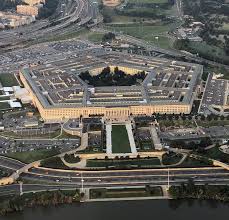OTA approach in the Procurement Reform

an interesting article found in FEDERALTIMES.COM
Tim Greeff is the founder and CEO of National Security Technology Accelerator
There is a right way and a wrong way to do rapid acquisitions for the U.S. military. And the recent debacle over a $950 million internet cloud contract to an Amazon partner, later dramatically cut back by the Pentagon, underscores the wrong approach.
The contract made use of an innovation in federal procurement called other transaction authority, or OTA, which is designed to jump-start the slow weapons- and technology-buying process and rapidly develop prototypes for assessment by the military services. OTA-funded projects are vital to helping U.S. forces maintain their technological edge by allowing the military to tap into companies and universities not typically interested in working with excessively bureaucratic government agencies.
Oracle filed a protest with the Government Accountability Office, calling the cloud computing contract “an egregious abuse” of a streamlined acquisition process that was “shrouded in secrecy.” The opacity of the procurement left it open to charges of perceived favoritism. In the end, the Department of Defense slashed the contract ― to no more than $65 million ― and scaled back the scope.
The cloud contract provides a teachable moment for procurement reform-minded officials in the Pentagon and on Capitol Hill. The problem was not with the OTA mechanism, which remains an essential element of reforming Pentagon procurement. Rather, the problem was with a lack of transparency with how the mechanism was employed.
The Coalition for Government Procurement, a nonprofit association of government contractors, supports the use of OTAs. But it stressed that in the wake of the cloud contract, the Department of Defense “should be sensitive to issues, like transparency, as they reinforce the perception of fairness and credibility that is necessary for success.”
By no means an exotic contracting approach, OTA is synonymous with successes. For example, it has been in use since the late 1950s and was an essential tool for encouraging the technological advances that won the space race. In addition to NASA, other federal agencies now have the authority.
The Department of Defense is increasingly turning to OTA to help realize the promise of procurement reform. One key reason is that projects funded this way “are generally not subject to the federal laws and regulations that apply to government procurement contracts,” says the Air Force Office of Transformational Innovation.
Supported by Congress and successive administrations, OTA is not the contracting equivalent of the Wild West, despite the relief from certain regulations. That’s because most all of the agencies have strict limitations on the use of OTA agreements.
This rapid acquisition tool is vital for its allure to private industry, especially those companies that are intimidated by government bureaucracy or don’t have the back-office infrastructure and available resources typically required to do business with government.
In the way the Pentagon uses OTA, a mix of private companies, nonprofits and government offices manage OTA funds and programs. Among them, several best practices are emerging about how best to assist the military forces through this rapid acquisition mechanism ― and how to avoid transparency issues likes those that befell the cloud contract.
First, extensive transparency should be the default, not the exception. Solicitations should be distributed broadly through an open-source platform. In other words, all requests for technology solutions and solicitations are available for anyone to see. Encouraging full and open competition is a key element in delivering the best solutions to the war fighter.
Second, the OTA managing entity should provide innovative companies access to Department of Defense development budgets while also providing mentoring and support every step of the way, from contracting to prototyping. Similarly, the managing entity should also help the government program office find new innovators to increase visibility of and competition for the requirement. The job of the OTA administrator is to make the entire process on one end easier for the innovator, contracting office and program office and on the other end the sailor, solider, airman or Marine.
Potential adversaries have greater access to emerging commercial technologies than ever before, posing a serious threat to national security. In just one worrisome example, anti-terror officials are warning of the threat from terrorists using commercially available drones that drop grenades or deadly toxins. What’s more, most enemies are not saddled with a yearslong development process for fielding new systems, unlike U.S. forces.
Used correctly ― and transparently ― the other transaction authority will allow the U.S. to stay several steps ahead of any adversary and make true procurement reform a reality.

